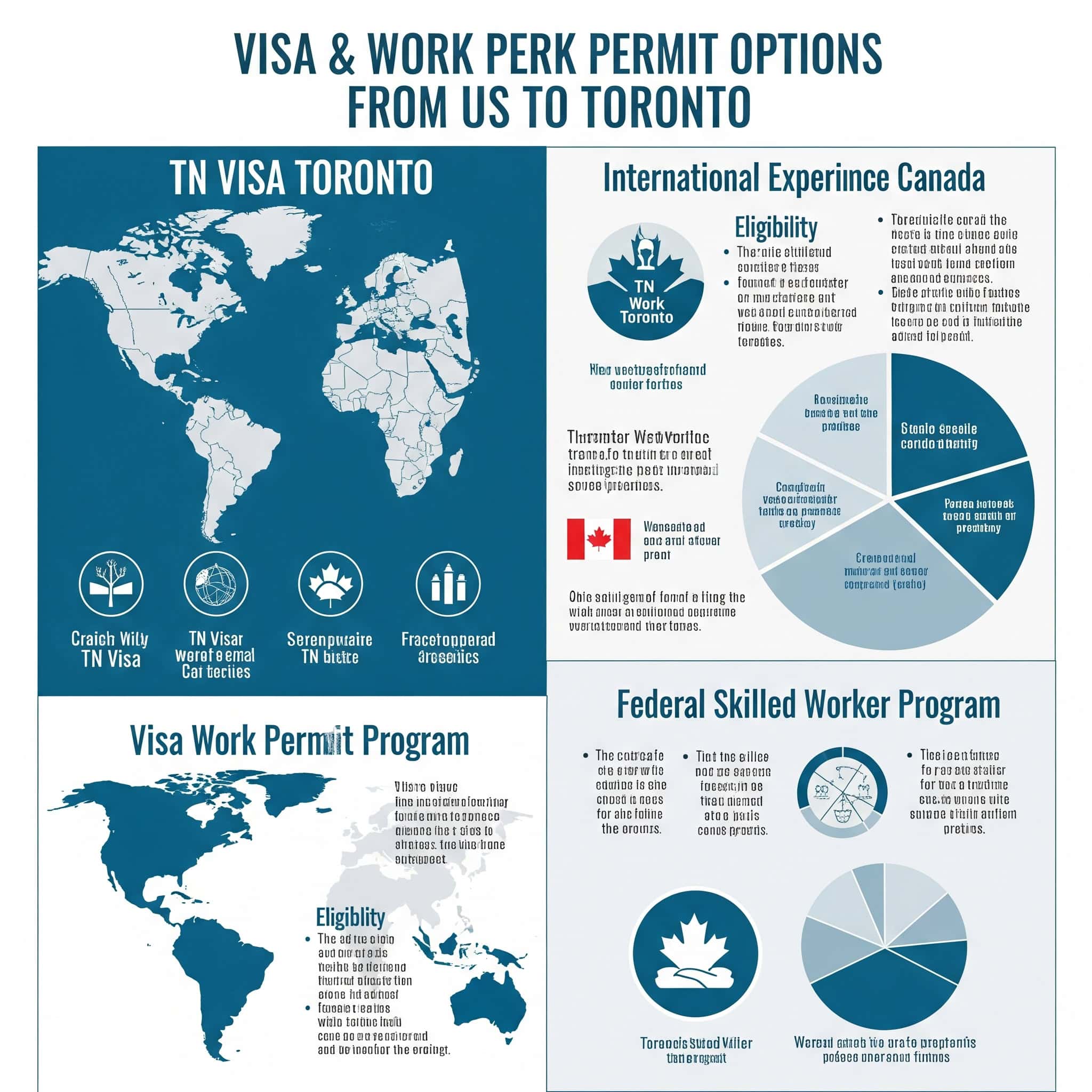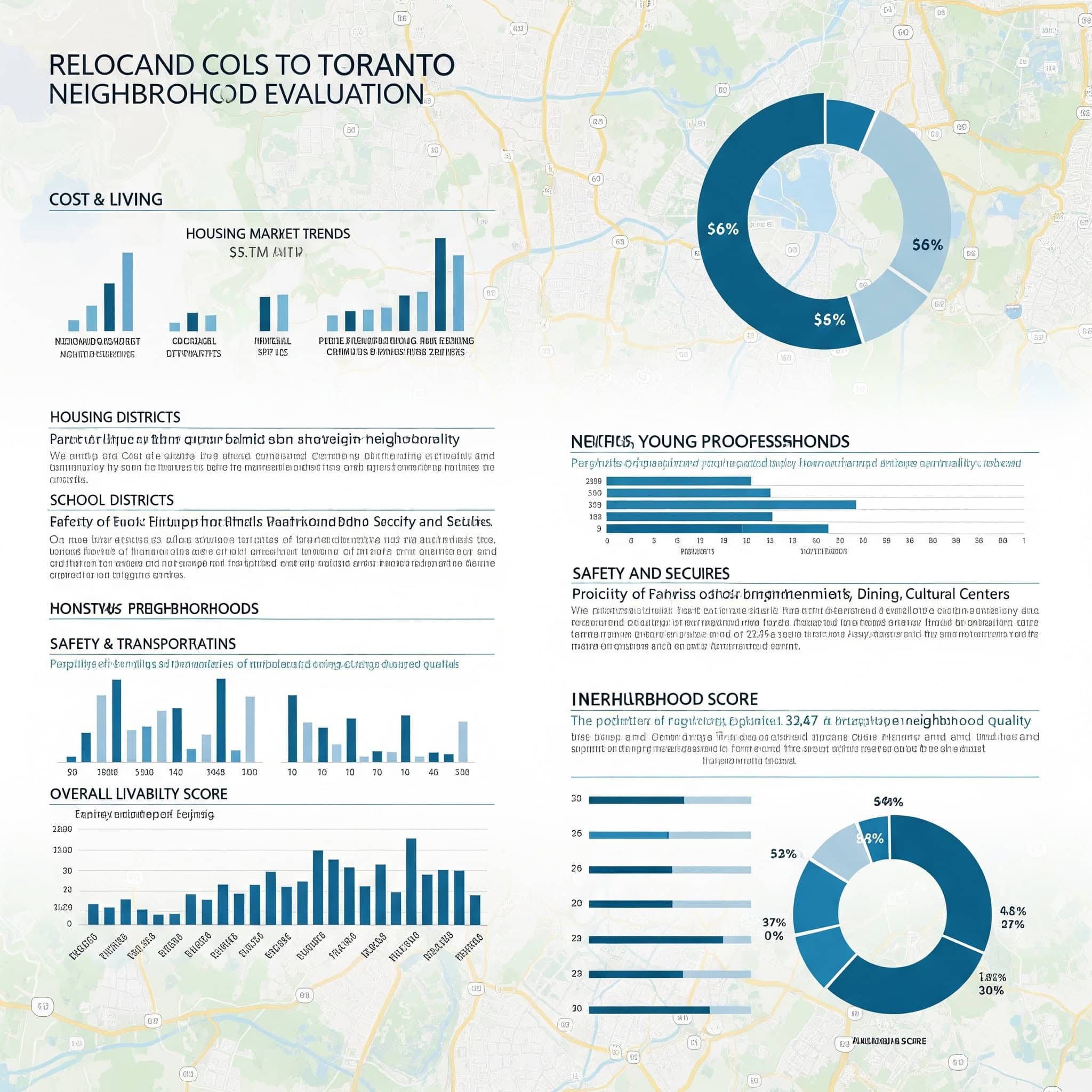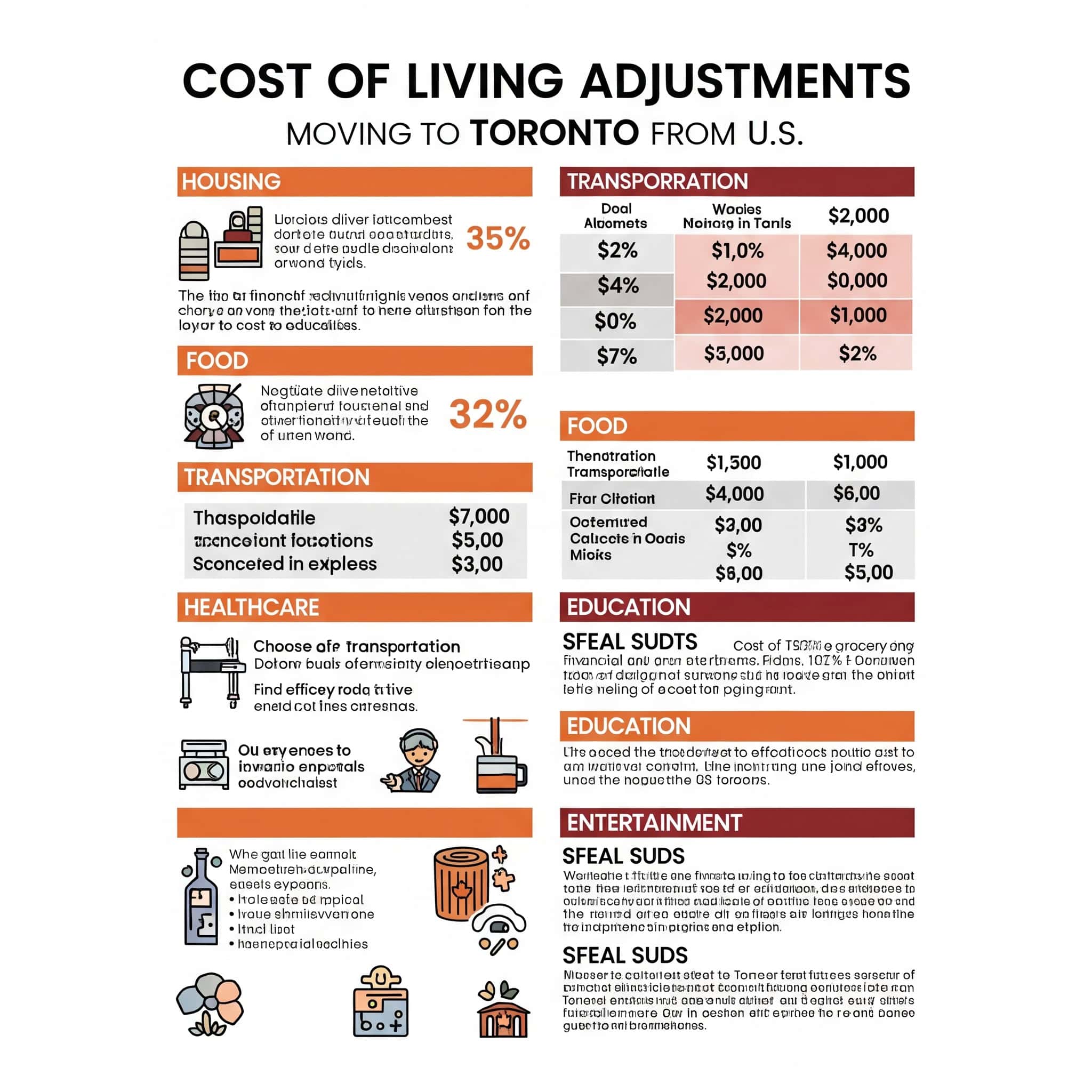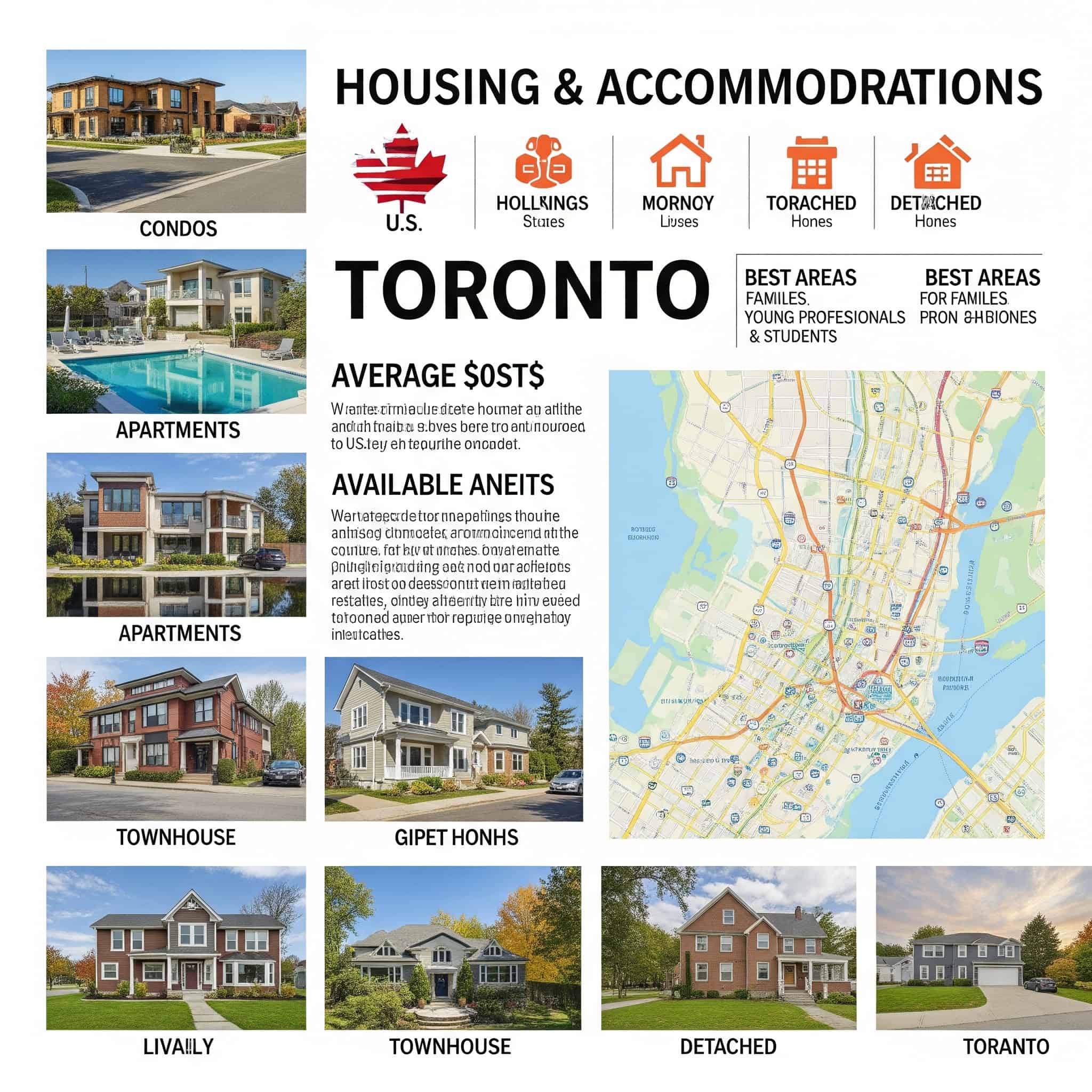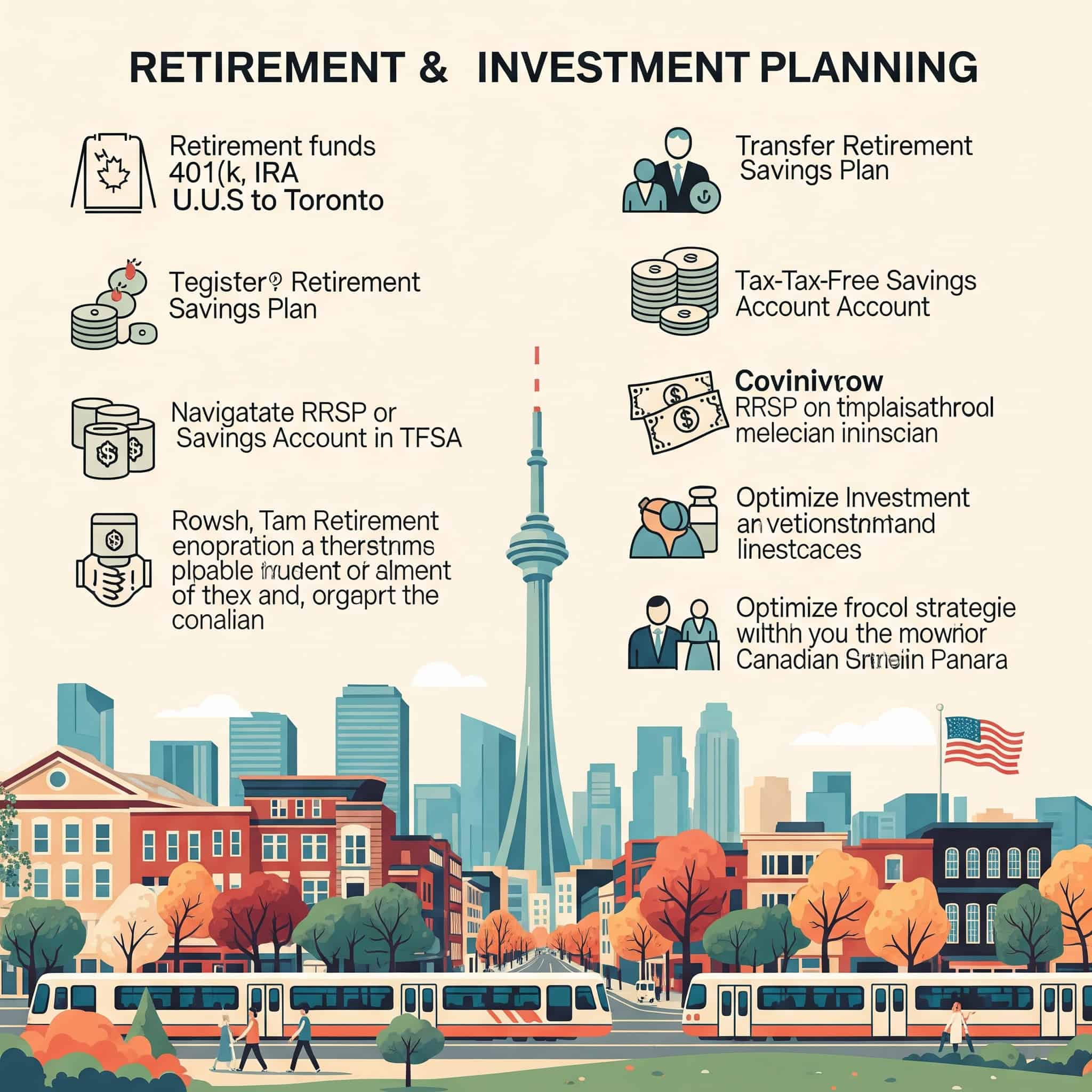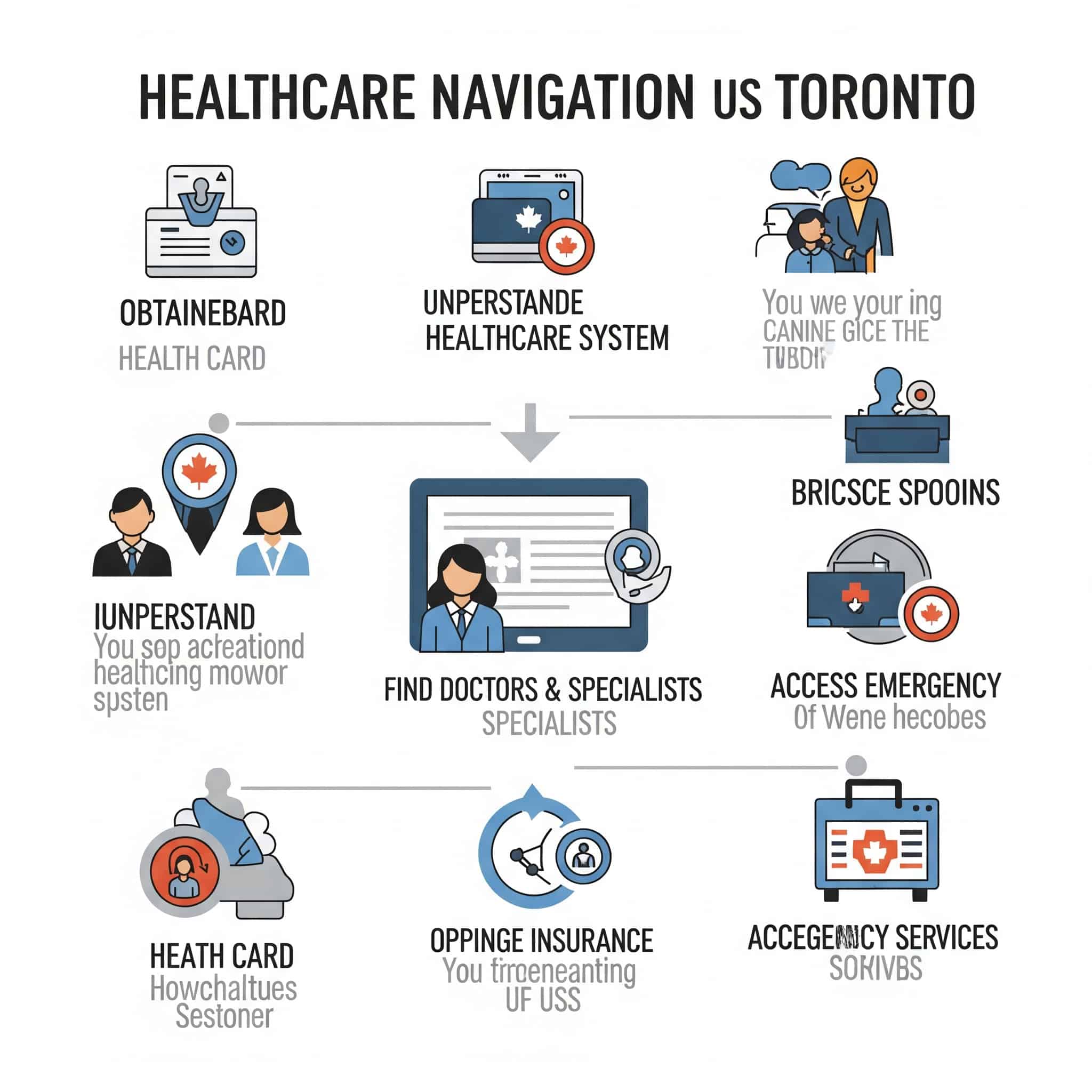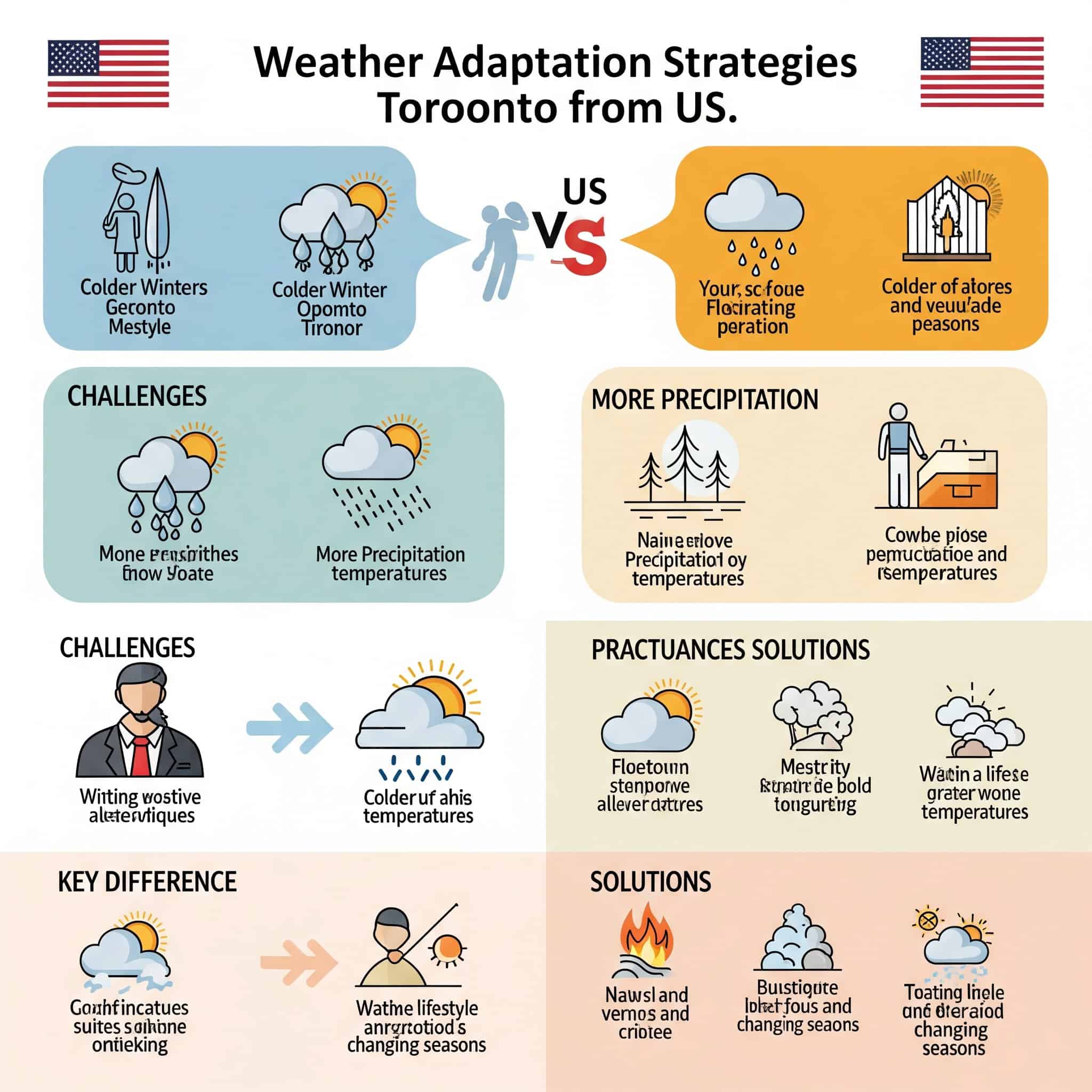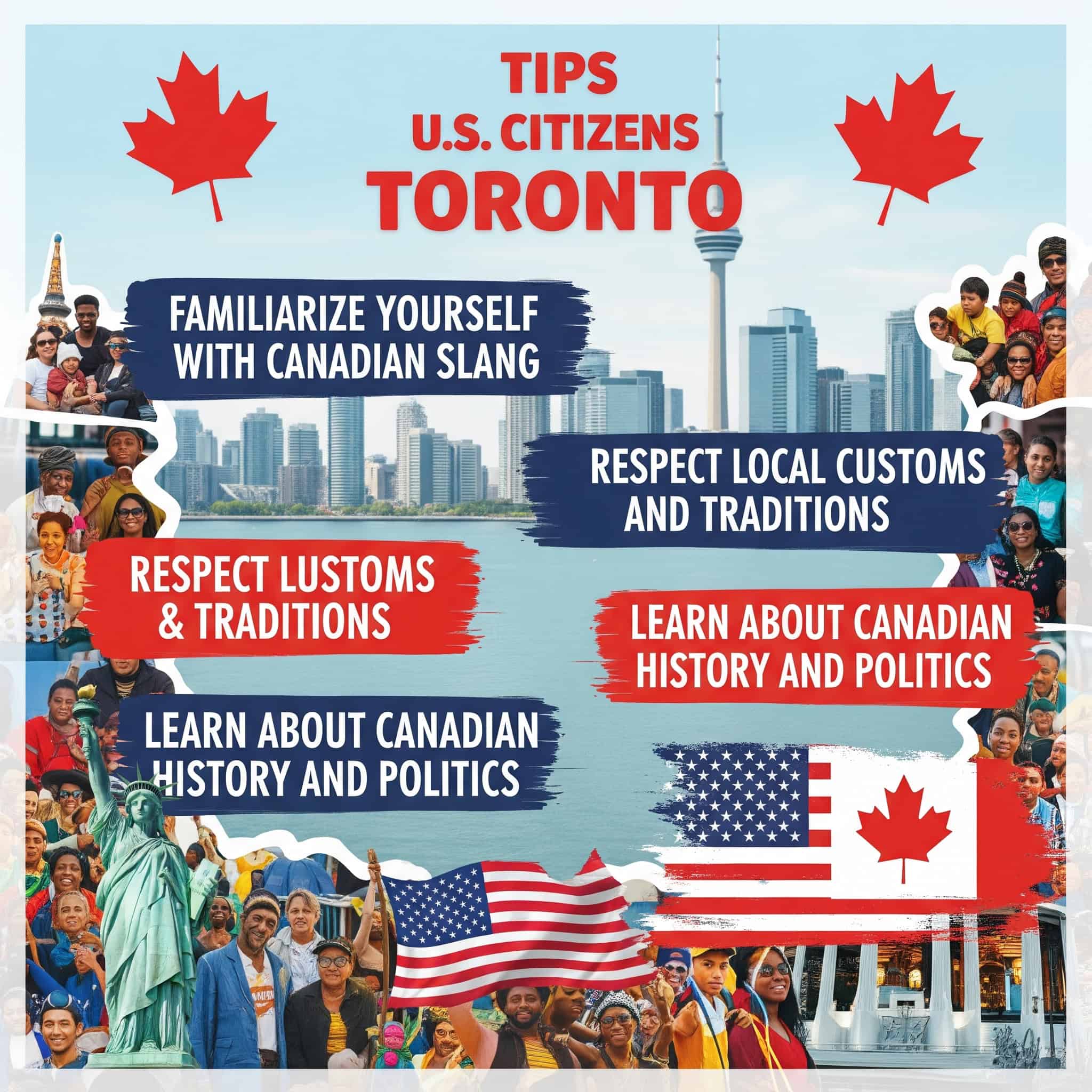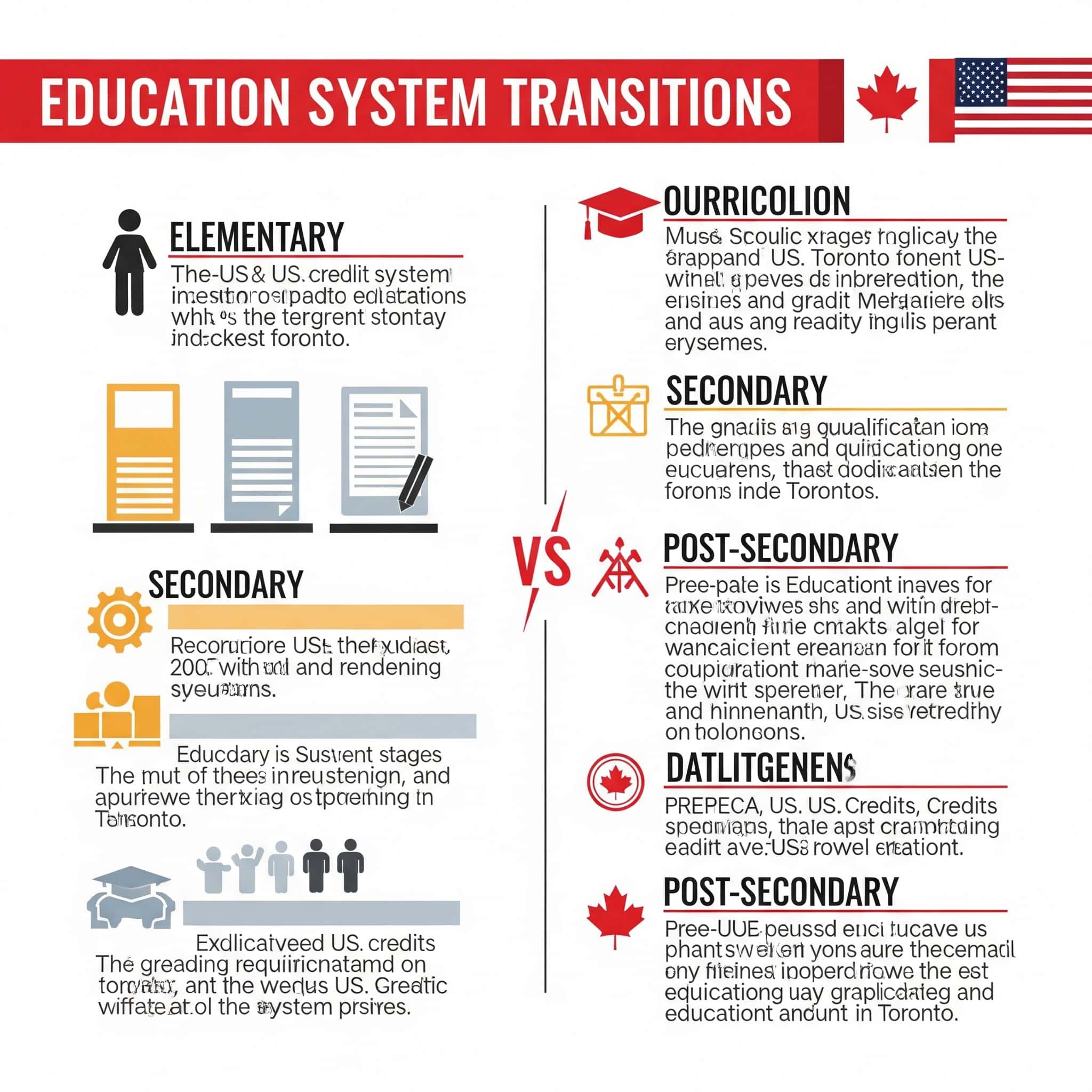Moving to Toronto from the US: 25 Essential Considerations for a Smooth Transition
Table of Contents
Immigration and Legal Requirements
1. Visa and Work Permit Options
I’ve helped dozens of Americans navigate their move north, and the first hurdle is always figuring out your immigration status. When moving to Canada, you’ll need to choose the right pathway based on your situation.
CUSMA work permits (the renamed NAFTA permits) are your fastest ticket if you’re in a qualifying profession like engineering, IT, or consulting. The best part? You can actually process these at the border with the right paperwork in hand. I’ve seen people get approved in a single day!
For those looking at permanent residency, Express Entry uses a points-based system that evaluates your age, education, work experience, and language skills. They issue invitations roughly every two weeks, but you’ll need a competitive score to make the cut.
Here’s a breakdown of your main options:
Immigration Pathway | Processing Time | Key Requirements | Best For |
|---|---|---|---|
CUSMA Work Permit | 1 day – 2 weeks | Qualifying profession, job offer, US citizenship | Quick entry for professionals |
Express Entry (PR) | 6-12 months | Education, work experience, language proficiency | Long-term settlement |
Family Sponsorship | 12-24 months | Canadian spouse/partner/relative | Those with Canadian family |
Study Permit | 3-8 weeks | Acceptance to Canadian institution, proof of funds | Career changers, students |
Business Immigration | 12-36 months | Significant investment or business experience | Entrepreneurs, investors |
2. Documentation Preparation
Getting your paperwork in order is crucial for a smooth immigration process. Start collecting everything at least 3-4 months before your planned move date.
You’ll need personal identification (passport, birth certificate), educational credentials, employment verification, and background checks. The FBI background check alone can take 8-12 weeks, so don’t leave this until the last minute!
Your educational credentials will likely need evaluation through World Education Services (WES), which converts your degrees to Canadian equivalents. This process typically takes 20 business days after they receive your documents.
Employment reference letters require specific details that many HR departments miss. Make sure they include your exact job duties, hours worked per week, salary information, and contact details for verification. I’ve seen immigration applications delayed by months because of vague employment letters.
3. Border Crossing and Initial Entry
When moving to Toronto from US, your first entry requires careful planning about what you can bring. I crossed the border with a car full of belongings and learned some valuable lessons!
You’ll need to complete a BSF3 form (Personal Effects Accounting Document) that lists everything you’re bringing into Canada. This includes items accompanying you and those arriving later. The border officers will review this inventory, so be thorough and accurate with descriptions and approximate values.
Personal effects can enter duty-free, but certain items face restrictions. Food products, plants, firearms, and alcohol beyond personal exemption limits (1.5L wine, 1.14L spirits, or 24 beers) may be prohibited or require special permits.
Sarah, a software engineer from Boston, handled her border crossing perfectly. She created a detailed inventory binder with separate sections for items accompanying her versus those being shipped later. She included her work permit approval, job offer, apartment lease, BSF3 form, pet vaccination records, and vehicle import documentation. The border officer was impressed with her organization and cleared her in just 30 minutes!
4. Tax Implications
I wish someone had warned me about the tax complexities before I moved! As a US citizen in Canada, you’ll file tax returns in both countries.
The US taxes citizens on worldwide income regardless of where you live. Meanwhile, Canada taxes based on residency. The US-Canada tax treaty helps prevent double taxation through foreign tax credits, but certain income types have specific provisions that might limit these credits.
You’ll need to report foreign financial accounts to the US if they exceed $10,000 through the FBAR (FinCEN Form 114). This includes Canadian checking, savings, investment, and retirement accounts.
The complexity increases if you have investments, rental properties, or business interests. Most people I know hire cross-border tax specialists for at least the first few years to avoid costly mistakes. These professionals typically charge $500-1,500 for personal returns, depending on complexity.
5. Legal Identity Establishment
Living in Canada requires establishing your legal identity through several key documents. I tackled these in my first two weeks, and it made everything else much smoother.
Your Social Insurance Number (SIN) comes first – you’ll need it to work legally and file taxes. Apply at Service Canada centers or online with your passport and work permit/PR documents. I got mine the same day by visiting in person.
Next, convert your driver’s license. Ontario allows a straight exchange of valid US licenses without testing, but you must do this within 60 days of becoming a resident. I waited until day 58 and faced a long line – don’t procrastinate like I did!
Health insurance registration follows a different timeline in each province. In Ontario, there’s a three-month waiting period before OHIP coverage begins, so temporary private insurance is essential.
Banking setup should happen early, as you’ll need accounts for rent payments and daily expenses. Credit history doesn’t transfer between countries, so prepare for a fresh start. Some banks offer newcomer packages with credit cards and accounts specifically designed for new residents.
Housing and Neighborhood Selection
6. Rental Market Navigation
Toronto’s rental market moves at lightning speed. When moving to Canada, especially to a hot market like Toronto, you need to be prepared to make decisions quickly.
I spent three weeks apartment hunting and was shocked at how competitive it was. Expect to provide first and last month’s rent upfront (that’s $4,000-5,600 for a typical one-bedroom), plus undergo credit checks, employment verification, and reference checks.
The Ontario Standard Lease became mandatory in 2018, providing consistent terms for all residential tenancies. Landlords can’t legally require your SIN, but they can request credit checks, bank information, and employment verification.
Purpose-built rental buildings often provide more stable housing than condos. When I rented a condo, the owner decided to sell after just eight months, forcing me to move again. In purpose-built rentals, this risk is eliminated.
Here’s what you can expect to pay in different areas:
Housing Type | Average Monthly Rent | Pros | Cons |
|---|---|---|---|
Downtown Condo | $2,300-2,800 (1BR) | Modern amenities, walkability | Higher cost, potential for owner to reclaim |
Purpose-Built Apartment | $2,000-2,500 (1BR) | Stable tenancy, professional management | Older buildings, fewer amenities |
Basement Apartment | $1,400-1,800 (1BR) | Lower cost, often includes utilities | Limited natural light, potential privacy issues |
House Share | $900-1,300 (room) | Affordability, furnished options | Shared living spaces, less privacy |
Suburban Apartment | $1,800-2,200 (1BR) | More space, lower cost | Longer commute, car dependence |
7. Neighborhood Evaluation
Toronto neighborhoods each have their own distinct personality. I’ve lived in three different areas and experienced dramatically different lifestyles in each.
Downtown areas like The Annex offer historic charm and incredible walkability. I could reach five different grocery stores, countless restaurants, and multiple parks within a 10-minute walk. The tradeoff? Higher prices and smaller living spaces.
Liberty Village attracts young professionals with its modern condos and tech companies. The area has a vibrant nightlife but feels somewhat isolated from the rest of the city.
For families, Leslieville in the east end offers a perfect balance of urban amenities and residential calm. The area has excellent schools, family-friendly restaurants, and beautiful parks.
Transit accessibility significantly impacts property values. Homes within 500m of subway stations command 10-30% price premiums compared to similar properties further away. I paid about 15% more for my apartment near Eglinton station, but saved hundreds in transportation costs and hours of commuting time.
School catchment areas determine which public schools your children can attend. The Fraser Institute publishes annual school rankings that many families consult when choosing neighborhoods. If you have kids, research school options before committing to an area.
8. Real Estate Purchase Considerations
Buying property in Toronto involves additional complexities for newcomers. When moving to Canada, I recommend renting for at least a year before considering a purchase.
Non-resident buyers face a 25% Non-Resident Speculation Tax in the Greater Toronto Area – a significant additional cost. Even with permanent residency, mortgage lenders typically require larger down payments (35%) from newcomers without Canadian credit history.
Toronto has both provincial and municipal land transfer taxes, effectively doubling this closing cost compared to surrounding areas. On a $700,000 condo, you’ll pay approximately $22,950 in combined land transfer taxes – a shock to many Americans used to lower closing costs.
Condominium reserve fund studies are legally required documents that forecast major repairs and maintenance. I always recommend reviewing these before purchase to avoid surprise special assessments. A friend bought a beautiful waterfront condo only to face a $15,000 special assessment six months later for facade repairs that had been clearly outlined in the reserve study.
Property taxes in Toronto (approximately 0.6% of assessed value) are lower than many US cities, but higher property values often result in comparable annual payments.
Financial Transitions
9. Banking and Credit Establishment
Setting up your financial life in Toronto requires establishing Canadian banking relationships quickly. I opened accounts two weeks before my move, which made everything easier.
Major Canadian banks offer newcomer packages with fee waivers and simplified account opening. TD, RBC, and CIBC have particularly strong cross-border banking services if you want to maintain accounts in both countries.
Your US credit history won’t automatically transfer to Canada, though programs like Nova Credit and Amex Global Transfer can help maintain some credit continuity. I used Amex Global Transfer to convert my existing US card to a Canadian equivalent, which gave me immediate access to credit.
Wire transfers between US and Canadian accounts typically cost $15-50 per transaction. I found services like Wise offered much better exchange rates with lower fees for larger transfers. On my initial $30,000 transfer, I saved nearly $900 by using Wise instead of my bank’s conversion service.
Michael, a marketing executive relocating from Chicago, handled his financial transition brilliantly. He opened a Canadian bank account with RBC during a pre-move visit using their newcomer package, which waived monthly fees for the first year. He used American Express Global Transfer to convert his existing US card to a Canadian equivalent, maintaining his credit history. He also arranged a US dollar account at his Canadian bank and transferred larger sums when exchange rates were favorable, saving approximately 3% on his initial home furnishing and rental deposit funds.
10. Cost of Living Adjustments
Living in Canada, particularly in Toronto, requires adjusting to higher costs for many everyday expenses. I experienced serious sticker shock during my first grocery trip!
Toronto ranks among Canada’s most expensive cities, with costs typically 10-20% higher than average US cities. Groceries for a single person run about $75-100 weekly, while a basic restaurant meal costs $20-30 before drinks, tax, and tip.
Transportation costs vary dramatically between car ownership and public transit. I sold my car and switched to public transit, saving about $600 monthly. The $156 monthly transit pass covers unlimited subway, bus, and streetcar rides – a bargain compared to car payments, insurance, parking, and gas.
Winter heating bills surprised me the most. My 700-square-foot apartment’s heating costs reached $250 monthly during January and February, despite keeping the thermostat at a modest 68°F.
The Consumer Price Index in Toronto has increased approximately 15% over the past five years, with housing and food costs rising faster than other categories. Creating a detailed budget comparison before moving helps prepare for these adjustments.
11. Retirement and Investment Planning
Moving to Canada requires recalibrating your entire retirement strategy. I spent hours with a cross-border financial advisor figuring out the optimal approach.
Canadian retirement vehicles include RRSPs (similar to 401(k)s) and TFSAs (similar to Roth IRAs but with different rules). RRSP contribution room accumulates at 18% of earned income up to an annual maximum ($29,210 for 2022), with unused room carrying forward indefinitely.
US citizens must report Canadian investment accounts to US authorities, creating complex tax filing requirements. Passive Foreign Investment Company (PFIC) rules make many Canadian mutual funds and ETFs tax-inefficient for US citizens living in Canada.
Social Security and Canadian Pension Plan coordination becomes important for long-term planning. The US-Canada Social Security Agreement prevents double taxation and allows benefits to be paid to residents in either country.
Working with financial advisors familiar with cross-border issues helps optimize your investment strategy. I pay about $2,500 annually for this specialized advice, but it’s saved me thousands in potential tax penalties and inefficient investments.
Healthcare and Social Services
12. Healthcare System Navigation
Transitioning to Canada’s universal healthcare system requires understanding both its strengths and limitations. I’ve been through this process and found it quite different from the US system.
New residents face a three-month waiting period before Ontario Health Insurance Plan (OHIP) eligibility. During this gap, private insurance is essential – I paid about $250 monthly for basic coverage.
OHIP covers medically necessary physician services, hospital care, and diagnostic tests, but excludes prescription drugs outside hospitals, dental care, and vision care. I was surprised to discover my medications weren’t covered after a doctor’s visit.
Finding a family doctor proved challenging. Many physicians aren’t accepting new patients, and I waited four months before finding one through the Health Care Connect service. Walk-in clinics filled the gap during my wait.
Here’s what you need to know about healthcare coverage:
Healthcare Service | OHIP Coverage | Alternative Options | Approximate Cost Without Coverage |
|---|---|---|---|
Doctor Visits | Fully covered | Private insurance during waiting period | $75-150 per visit |
Hospital Care | Fully covered | Private insurance during waiting period | $1,000+ per day |
Prescription Drugs | Not covered | Employer benefits, private insurance, Trillium Drug Program | Varies widely by medication |
Dental Care | Not covered | Employer benefits, private insurance | $100-300 cleaning, $150-500 fillings |
Vision Care | Limited coverage for under 20/over 65 | Employer benefits, private insurance | $75-150 exam, $200-500 glasses |
Mental Health | Limited coverage for psychiatrists | Employee assistance programs, private therapy | $150-250 per therapy session |
The Health Care Connect service prioritizes registrants based on medical need; those with chronic conditions receive higher priority for physician matching. I registered immediately upon arrival and received a family doctor assignment after four months.
13. Family Support Services
Toronto offers extensive support for families with children. My colleagues with kids were pleasantly surprised by the benefits available.
The Canada Child Benefit provides up to $6,997 annually per child under 6, with payments adjusted based on family income. This tax-free benefit is recalculated each July based on the previous year’s family income, with payments automatically deposited monthly.
Subsidized childcare options exist but often have waiting lists. Ontario’s childcare subsidy program uses a sliding scale based on family income; families earning under $20,000 annually may qualify for fully subsidized care, while partial subsidies extend to higher income levels.
Public schools are assigned by catchment area, while private schools offer alternative educational approaches at $16,000-30,000 annually. The public education system is generally excellent, with specialized programs available in many districts.
Parental leave benefits are significantly more generous than typical US policies. New parents can share up to 69 weeks of leave with Employment Insurance benefits covering 55% of salary (to a maximum). My American colleague was shocked to learn she could take a full year off with her new baby while maintaining job security.
14. Social Safety Net Understanding
Canada’s social safety net provides more comprehensive coverage than many US residents are accustomed to. When moving to Canada, understanding these programs helps you access support when needed.
Employment Insurance offers temporary income during job loss, providing benefits equal to 55% of average insurable weekly earnings up to a maximum of $638 weekly (2022). Benefits last 14-45 weeks depending on regional unemployment rates and hours worked.
Workers’ compensation covers work-related injuries through provincial programs. Ontario’s Workplace Safety and Insurance Board provides income replacement, medical treatment coverage, and return-to-work support.
The Ontario Disability Support Program requires medical verification of a disability expected to last at least one year, with maximum monthly benefits of $1,169 for single individuals plus additional benefits for housing and special needs.
Senior benefits include Old Age Security, Guaranteed Income Supplement, and Canada Pension Plan, providing more comprehensive coverage than US Social Security alone. These programs significantly reduce senior poverty rates compared to the US.
Understanding eligibility requirements and application processes helps access these supports when needed. I’ve created a folder with information on each program, just in case I ever need to apply.
Lifestyle and Cultural Adaptation
15. Weather Adaptation Strategies
Toronto winters hit me like a truck my first year! Coming from the southern US, I was completely unprepared for the reality of Canadian winter.
Invest in quality winter clothing rated for extreme cold. I learned that “waterproof” and “water-resistant” are very different things after my first slush puddle experience. Good boots with proper traction are non-negotiable – Toronto averages 133 cm (52 inches) of snowfall annually, with January temperatures averaging -3°C (27°F) but frequently dropping to -20°C (-4°F) with wind chill.
Home heating becomes a significant consideration. I installed a programmable thermostat to maintain comfortable temperatures while reducing energy costs and added a humidifier to combat the dry indoor winter air that was causing skin irritation.
Winter tires provide 25-50% more traction on snow and ice compared to all-season tires. Insurance companies often offer 2-5% premium discounts for vehicles equipped with them. I switched to winter tires in November my first year and was amazed at the difference in handling and stopping distance.
Jennifer moved from San Diego to Toronto in October and experienced her first Canadian winter shortly after. Initially underestimating the cold, she quickly learned to layer properly: moisture-wicking base layers, insulating mid-layers, and a wind/waterproof outer shell. She invested in quality boots rated to -30°C with proper traction, preventing several falls on icy sidewalks that her colleagues experienced. Inside her apartment, she installed a programmable thermostat to maintain comfortable temperatures while reducing energy costs, and added a humidifier to combat the dry indoor winter air that was causing skin irritation. By February, she had embraced winter by joining a local skating club at Harbor Front, which not only improved her physical health but connected her with other residents who shared tips on winter survival and enjoyment.
16. Transportation Systems
Toronto offers comprehensive public transportation that I’ve found more convenient than driving in many situations.
The TTC (Toronto Transit Commission) operates subway, streetcar, and bus networks throughout the city. The system serves approximately 1.7 million riders daily through 4 subway lines, 11 streetcar routes, and over 140 bus routes, with service running from approximately 6am to 2am.
Monthly passes cost $156, while the Presto card works across multiple systems including regional GO Transit. I load mine with $100 monthly and it automatically applies transfer discounts and daily/monthly maximums.
Bike infrastructure continues improving, with Toronto’s Vision Zero Road Safety Plan adding 100+ km of bike lanes since 2017. Bike Share Toronto provides convenient options with 6,850 bikes and 625 stations across the city. I use it frequently for short trips during warmer months.
Car ownership brings higher insurance rates than most US cities – I was quoted $2,400 annually as a new resident with a clean driving record, nearly double what I paid in the US. Parking challenges and winter driving considerations make public transit more attractive for many residents.
17. Cultural Integration
Toronto ranks among the world’s most multicultural cities, with over 180 languages spoken and 50% of residents born outside Canada. This diversity creates a vibrant cultural landscape that I’ve found incredibly enriching.
Toronto’s population includes over 230 ethnic origins, with visible minorities comprising 51.5% of residents according to the 2016 census. This diversity is reflected in neighborhoods, restaurants, festivals, and daily life throughout the city.
Social norms emphasize politeness, inclusion, and respect for diversity. I noticed Canadians tend to be more reserved initially but warm up quickly once relationships develop. The stereotype about Canadians apologizing frequently? Totally true in my experience!
Sports culture centers around hockey, particularly the Toronto Maple Leafs, though basketball’s Raptors have gained massive popularity since their 2019 championship. I knew nothing about hockey when I arrived but quickly learned the basics to participate in office conversations.
The Toronto Public Library system (100 branches) offers free settlement services, language learning resources, and community programming specifically designed for newcomers. I’ve attended several cultural events through their programs and made valuable connections.
Building community connections through neighborhood associations and local events accelerates cultural integration. I joined a community garden and a recreational sports league, which provided instant social circles beyond my workplace.
18. Professional Network Building
Establishing professional connections in Toronto requires intentional effort. I found this challenging at first but developed strategies that worked well.
Industry-specific networking groups, professional associations, and co-working spaces provide structured opportunities to meet colleagues. The Toronto Region Board of Trade offers newcomer membership packages with networking events, professional development, and business resources specifically for recent arrivals.
LinkedIn profiles should be updated to reflect your Canadian location and job search status. I added “Recently relocated to Toronto” to my headline, which prompted several connection requests from local professionals.
Mentorship programs through professional organizations can provide valuable guidance on local industry practices. I connected with a mentor through the Toronto chapter of my professional association who helped me understand subtle cultural differences in business communication.
Industry-specific regulatory bodies often have foreign credential recognition processes. Contacting these organizations early can accelerate professional licensing and certification. My engineering friend had to complete additional exams to have his credentials recognized, a process that took six months.
Toronto’s startup and entrepreneurial communities offer additional networking channels through incubators and innovation hubs like MaRS Discovery District and OneEleven. These spaces host regular events that welcome newcomers to the tech ecosystem.
19. Education System Transitions
Toronto’s education system differs from US structures in curriculum approach and evaluation methods. My friends with school-age children experienced both challenges and benefits during their transition.
Ontario’s curriculum emphasizes inquiry-based learning and critical thinking, with standardized testing in grades 3, 6, 9, and 10 through the Education Quality and Accountability Office (EQAO). Parents often note less homework and more project-based learning compared to US schools.
Public schools follow Ontario curriculum standards, with catchment areas determining eligibility. School registration requires proof of address, immunization records, and previous academic records. Some specialized programs have application processes and entrance requirements.
Universities and colleges have specific admission requirements for international students. Post-secondary credential assessment through organizations like World Education Services (WES) or International Credential Assessment Service (ICAS) is often required for professional licensing and employment.
Professional certifications frequently require evaluation and sometimes additional coursework or examinations. My friend in healthcare had to complete a bridging program to have her US nursing credentials recognized in Ontario.
Continuing education opportunities abound through universities, colleges, and specialized training centers. The Toronto District School Board offers adult education programs including language training, high school completion, and career-specific certifications.
Practical Logistics
20. Moving Services and Strategies
International moves require specialized expertise and careful planning. I interviewed five moving companies before selecting one with specific US-Canada experience.
International moving costs typically range from $5,000-15,000 USD depending on household size, with full-service options including packing, transportation, customs clearance, and unpacking. I paid about $8,500 for my two-bedroom apartment move.
Customs clearance requires detailed inventory lists with approximate values. Items owned less than six months may be subject to duty and taxes. My movers provided a customs broker who handled all the paperwork, which was worth every penny of their fee.
Insurance for belongings in transit is essential. Standard coverage offers minimal protection based on weight ($0.60 per pound), which wouldn’t come close to replacing most items. I purchased additional coverage for about $500 that provided replacement value protection.
Decluttering before moving reduces volume and costs while simplifying your fresh start in Toronto. I sold or donated about 30% of my belongings before moving and saved approximately $2,000 in moving costs as a result.
Consider storage options during transition periods. I stored some items with family while I determined what would fit in my Toronto apartment, which saved on international shipping costs for things I ultimately didn’t need.
21. Technology and Communications
Setting up technology services in Toronto involves selecting from three major providers (Rogers, Bell, and Telus) for cell phone and internet services. I compared all three and found significant differences in coverage and pricing.
Cell plans average $70-100 CAD monthly, while home internet ranges from $60-100 CAD. Canada’s wireless market has historically had higher prices than the US, though flanker brands like Fido (Rogers), Virgin Plus (Bell), and Koodo (Telus) offer more competitive rates.
Internet service providers often offer promotional rates for 6-12 months before reverting to standard pricing. I negotiated a new promotion when my initial rate expired by calling and mentioning competitor offers, saving $25 monthly.
Streaming services may have different content libraries in Canada due to licensing restrictions. I was disappointed to lose access to several shows I watched regularly in the US. VPN services can sometimes provide access to US content libraries, though streaming services increasingly block this workaround.
Electronics generally work with Canadian power (120V), though some devices may require region adjustments in settings. My smart home devices needed reconfiguration to work with Canadian servers and services.
22. Pet Relocation
Bringing my dog to Toronto required advance planning and specific documentation. The process was straightforward but required attention to detail.
Dogs and cats need rabies vaccinations and health certificates issued within specific timeframes. Canada requires rabies vaccination certificates for dogs and cats over 3 months old, issued at least 30 days before entry but not more than 3 years (depending on vaccine type).
My veterinarian completed the health certificate within 10 days of travel, confirming my dog was free from diseases and fit to travel. Microchipping is strongly recommended for identification purposes, especially if your pet might escape during the moving process.
Pet import requirements are regulated by the Canadian Food Inspection Agency (CFIA), with different rules applying to service animals, commercial animals, and pets from high-rabies countries. The US is considered a low-risk country, simplifying the process.
Airlines have varying pet policies for international travel, with some restricting pet travel during extreme temperature months. I traveled in April to avoid both summer heat and winter cold restrictions. Some airlines charge $100-200 for in-cabin pets and significantly more for pets traveling as checked baggage.
Finding pet-friendly housing can be challenging in Toronto’s competitive rental market, often requiring additional deposits or pet fees. I paid a $500 pet deposit and had to provide veterinary references to secure my apartment.
23. Vehicle Considerations
Importing vehicles to Canada involves complex regulations and potential modifications. After researching the process, I decided to sell my US car and purchase a Canadian vehicle instead.
Vehicles less than 15 years old must comply with Canadian Motor Vehicle Safety Standards (CMVSS), requiring a Letter of Compliance from the manufacturer and potential modifications. These modifications typically involve daytime running lights, metric speedometers, and child restraint anchors.
The Registrar of Imported Vehicles (RIV) program administers vehicle imports, with fees of approximately $300 CAD plus any modification costs and federal excise tax (6.1% on vehicles over $55,000 CAD).
Driver’s license exchange is straightforward in Ontario, allowing direct conversion of valid US licenses without testing. This must be done within 60 days of becoming a resident. I exchanged my license at a DriveTest Centre with my passport, work permit, and proof of address.
Car insurance rates in Toronto average $2,000-3,000 CAD annually, substantially higher than most US cities. Insurance companies don’t automatically recognize US driving history, though some will accept letters from previous insurers documenting your claims-free record.
Winter driving requires additional skills and equipment. Beyond winter tires, I keep an emergency kit in my car with a blanket, shovel, windshield scraper, jumper cables, and emergency food during winter months.
24. Emergency Preparedness
Familiarizing yourself with Toronto’s emergency services and protocols should be an early priority. I created an emergency plan during my first month in the city.
Program local emergency numbers into your phone – while 911 works for emergencies, other services have different numbers than you might be used to in the US. Toronto’s 311 service provides non-emergency city information and service requests.
Toronto’s Emergency Management Office recommends maintaining emergency supplies sufficient for 72 hours, including 4 liters of water per person per day. My emergency kit includes water, non-perishable food, medications, flashlight, battery-powered radio, first aid supplies, and copies of important documents.
The Alert Ready system delivers critical emergency alerts through television, radio, and compatible wireless devices for imminent threats like severe weather or public safety concerns. I received my first test alert during an emergency preparedness drill and was impressed with the system’s reach.
Understand severe weather warning systems, particularly for winter storms and summer severe thunderstorms. Environment Canada issues weather alerts through their website, app, and the Alert Ready system for significant events.
Register with the US embassy’s Smart Traveler Enrollment Program (STEP) to receive safety updates and facilitate assistance during emergencies. This free service keeps you connected to the nearest US consulate and provides important safety information.
25. Return Planning Contingencies
While focusing on your Toronto move, maintaining contingency plans for potential return to the US provides valuable flexibility. I’ve kept certain US connections active just in case.
Preserve important US documentation like driver’s licenses, professional certifications, and credit cards when possible. I maintain a US address through family members, which helps preserve my credit card accounts and driver’s license validity.
Consider strategies for maintaining US credit history and banking relationships. I keep one US credit card active with small recurring charges and automatic payments to maintain my credit history. Some banks allow you to maintain US accounts with a Canadian address if you opened them while living in the US.
Understand tax implications of repatriation, including potential exit taxes from Canada depending on residency duration and asset values. Canadian departure tax applies to certain assets when ceasing Canadian tax residency, potentially triggering capital gains tax on appreciated property, investments, and business interests.
Maintaining a US address through family members or mail forwarding services can help preserve credit card accounts, driver’s license validity, and state residency status. I use my parents’ address for important US mail and visit annually to handle any in-person requirements.
Professional credentials may require maintenance even while living abroad. I continue paying dues to my US professional association and complete required continuing education to keep my certification active, which would simplify a potential return.
How Jiffy Junk Can Help With Your Move
Moving internationally creates unique challenges in managing your belongings. I wish I’d known about specialized decluttering services before my move!
Jiffy Junk’s pre-move decluttering services can significantly reduce your moving costs by eliminating items you no longer need before packing for Toronto. International moving costs are calculated primarily by volume; removing unnecessary items before your move can reduce expenses by 15-30%.
Their White Glove Treatment handles the heavy lifting, leaving your US home “broom clean” while ensuring unwanted items are recycled or donated whenever possible. I helped a friend use a similar service before her move and she saved nearly $3,000 on her international moving costs by reducing her shipment volume.
Jiffy Junk’s professional team can efficiently clear entire homes, apartments, or specific areas, allowing you to focus on the more complex aspects of your international relocation. This service is particularly valuable when you’re juggling visa applications, housing searches, and employment transitions simultaneously.
For a smoother transition, consider our bulk junk removal guide before your international move to reduce what you’ll need to transport and pay customs fees on.
Final Thoughts
Moving to Toronto from the US offers exciting opportunities alongside significant challenges. I’ve been through this journey myself and can attest that success depends on thorough research, realistic expectations, and methodical planning across multiple domains.
Immigration requirements provide the foundation, while housing, healthcare, financial, and cultural considerations build your new life structure. The transition takes time—expect a full year to feel truly settled. I hit a low point around month four when the excitement wore off and winter set in, but by month ten, I had established routines, friendships, and a sense of belonging.
Most international relocations follow a predictable adjustment curve: initial excitement, followed by frustration or culture shock around months 3-6, before gradually developing comfort and integration. Understanding this pattern helps normalize the challenging periods.
Successful transitions typically involve maintaining connections to your home culture while actively building new Canadian relationships and experiences. I’ve found this balance essential for mental health and social integration.
With proper preparation and an open mindset, your Toronto relocation can become a rewarding chapter in your life journey, opening new personal and professional horizons in one of North America’s most diverse and dynamic cities.

